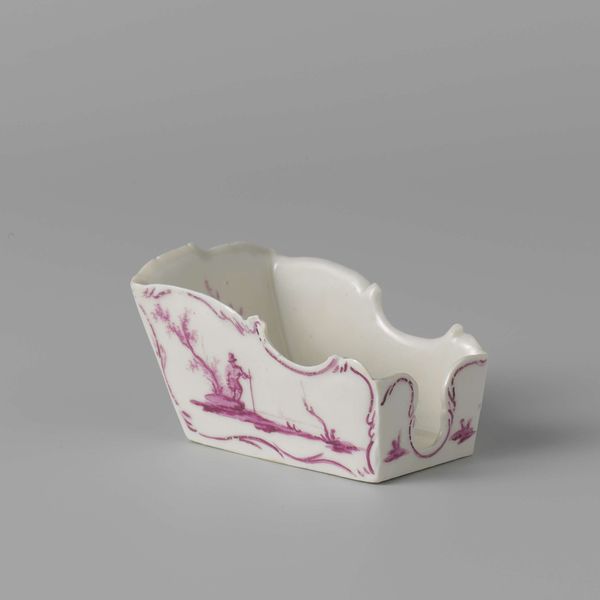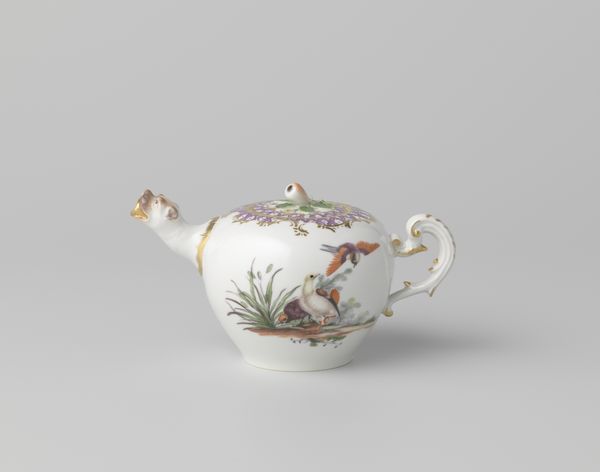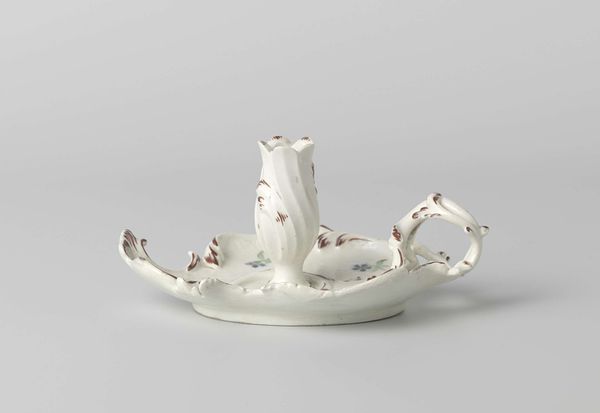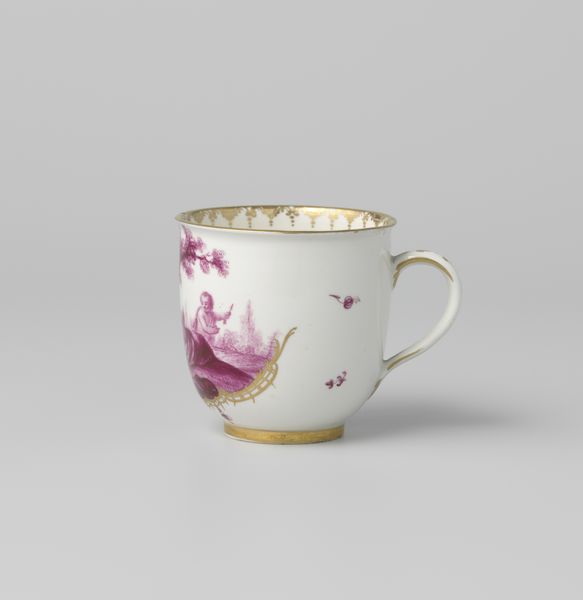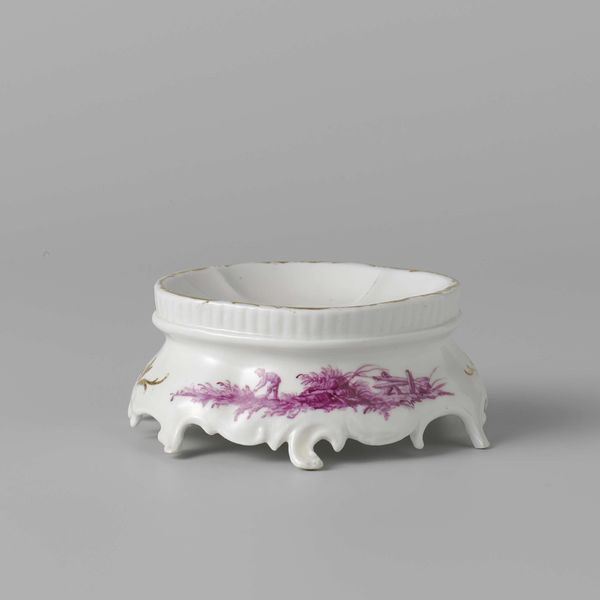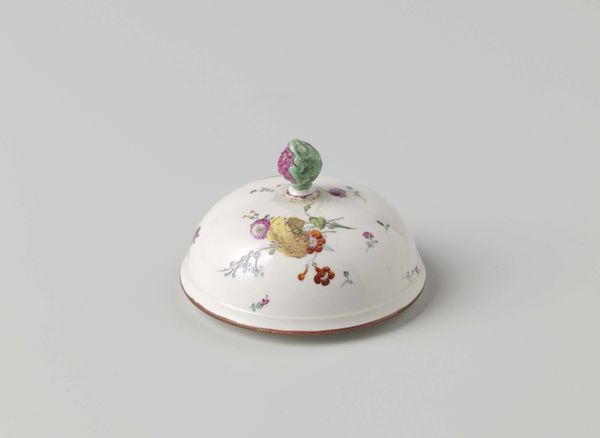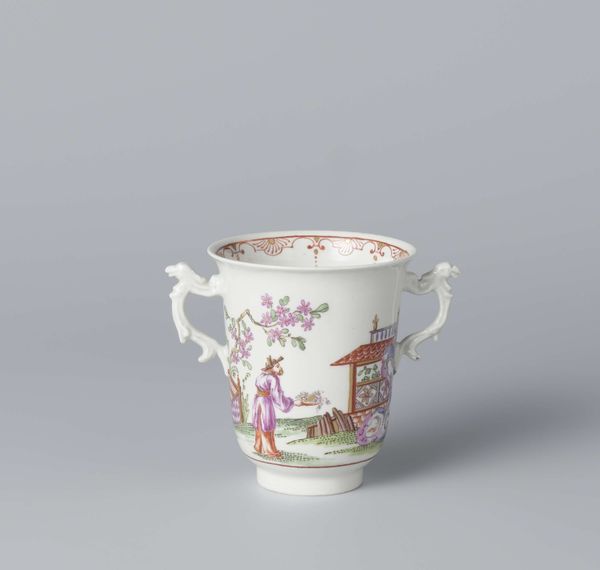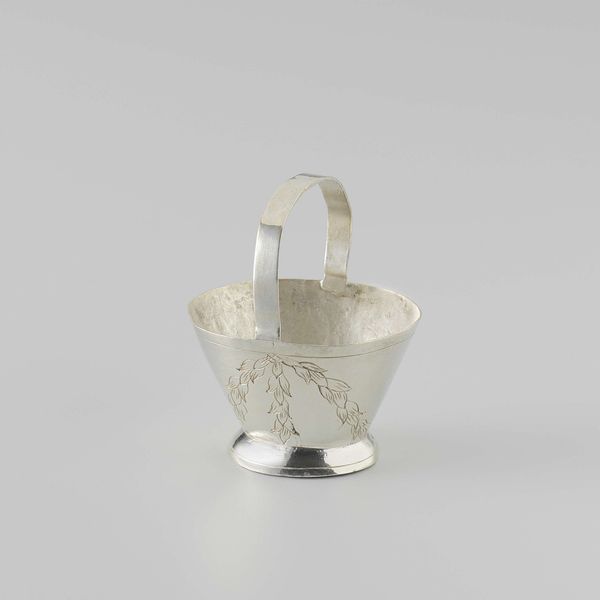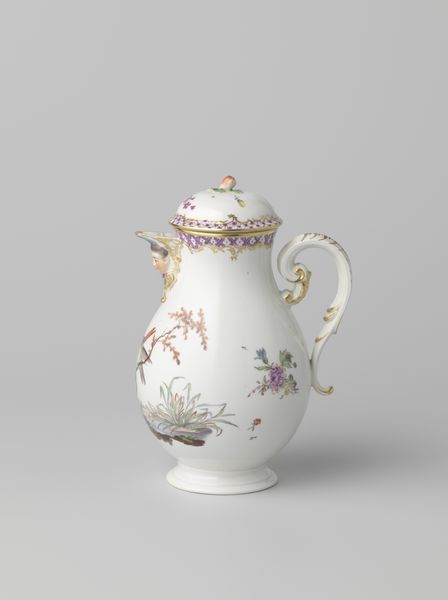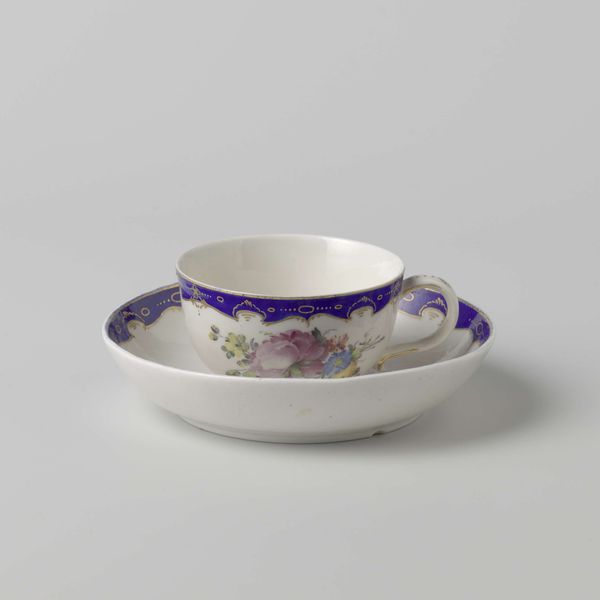
Dimensions: height 4.4 cm, width 8.6 cm, depth 5.2 cm
Copyright: Rijks Museum: Open Domain
Curator: Here we have a rather charming piece. It’s a porcelain pipe holder, shaped like a sled, created between 1774 and 1784 by the Loosdrecht porcelain factory. It is currently held in the collection of the Rijksmuseum. Editor: It’s daintier than I imagined. Such a playful shape—but it is undeniably Rococo with that pale lavender ornamentation. Porcelain…that instantly elevates it above mere utility. Curator: Absolutely. The Rococo style dominated decorative arts, and porcelain was the perfect medium to express that playful opulence for the elite. Think of the tea services, the figurines…porcelain embodied status. Editor: It speaks volumes about material culture and social habits of the time. Imagine the labour involved! From sourcing the raw materials to shaping, firing, decorating… This little piece represents countless hours of skilled artisan work. Do we know about the labour conditions at Loosdrecht? Curator: Loosdrecht, like many porcelain factories of the era, enjoyed aristocratic patronage. Willem, the Count of Gronsveld, funded much of its work. He was committed to reducing import tariffs to improve living standards in the province, so he encouraged national creativity of this kind. That explains the style and the materials, in some ways, because there was the space to make it happen! Editor: Yes, but look how it contrasts the count's ambitions. On one hand, to ease burdens; on the other, indulging in porcelain toys for pipe smoking. It's an interesting dissonance between the means of its production and what that represented. A tangible manifestation of the aristocracy's excesses—so delicate, and so symbolic of inequality. Curator: I suppose. But maybe it also represents a genuine desire for beauty, crafted into everyday life, making items beautiful as well as utilitarian for everyone in the community. It represents a change in aesthetics overall, really. Editor: True. Either way, it reminds us that even small, seemingly insignificant objects like this "Pijpenslee van porselein" offer fascinating insights into the world of those who created and used them. Curator: Precisely. And perhaps, even challenges us to reflect on our own relationships with objects today.
Comments
No comments
Be the first to comment and join the conversation on the ultimate creative platform.
